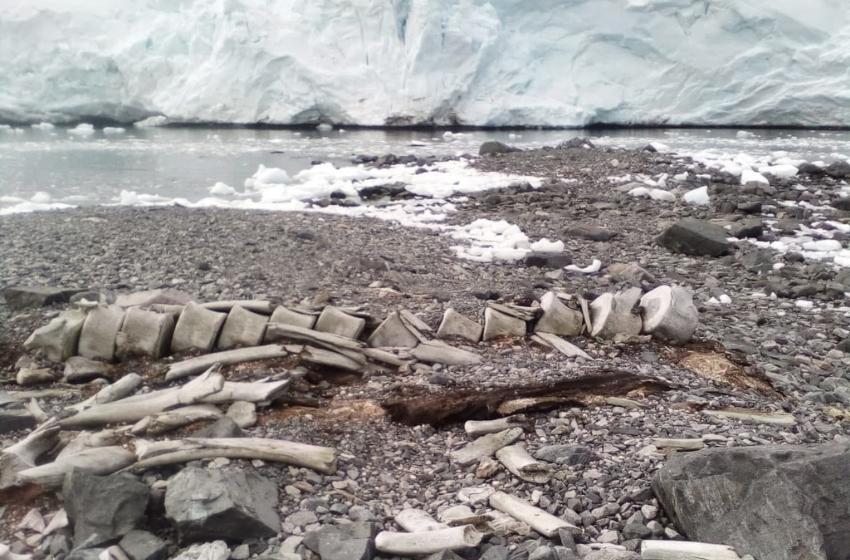Ukrainian scientists from Vernadsky Research Base have finally solved the mystery of the skeleton of a whale, which has been lying on Rasmussen island, that is near our station!
National Antarctic Scientific Center of Ukraine scientists obtained the results of radiocarbon analysis of samples made in a laboratory in Poznan, Poland. Thanks to this study, the age of the whale's remains was determined: it is 1350 years (plus / minus 30 years)!
To be more precise, this whale lived 1270 years before the first nuclear tests in the history of the Earth. Just imagine: the whale died in the seventh century, in the Vikings and the Mayan civilization era, three centuries before Princess Olga and Prince Vladimir!
As for the species, scientists have determined that it is a blue whale - the world's most giant whale and general animal. The length of the jaw found that this whale was at least 26 meters long. It belonged to the southern (Antarctic) subspecies - it is the largest subspecies among blue whales.
This discovery is significant because there are only a few dozen skeletons of blue whales in museums worldwide, and most of them belong to other subspecies. As a result of whaling, the blue whale was almost completely extinct by the 1960s. The species has been protected since 1963, but due to illegal (in particular, Soviet and Japanese) fishing, population recovery has not occurred. By the mid-1980s, there were no more than 200-1400 individuals left in the world. Before the fishing era, the Antarctic blue whale was one of the most numerous - the population was 250-300 thousand.



Scientists need to understand what whales were like before such a bloody human intervention in their lives. Currently, despite all conservation measures, the Antarctic blue whale remains very rare - its number of 1.6-3 thousand individuals (such an extensive range in the estimate indicates how little data we have about these sea giants). But it will take at least another 200 years for the population to recover, provided, of course, that no other threats arise.
Subsequent studies of whale remains will include genetic analysis, which will provide new information on the evolution of blue whales and the demographics of their ancient, now extinct herds.




Based by the materials of The National Antarctic Scientific Center (NANC)





















